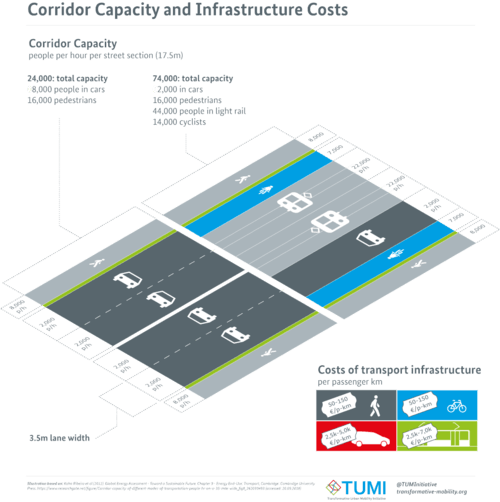Street reclamation
Street reclaiming is the process of converting, or otherwise returning streets to a stronger focus on non-car use — walking, cycling and active street life. It is advocated by many urban planners and urban economists, of widely varying political points of view. Its primary benefits are thought to be:
- Decreased automobile traffic with fewer automobile accidents and less smog
- Reduced summer temperatures due to less asphalt and more green spaces
- Increased pedestrian traffic which also increases social and commercial opportunities
- Increased gardening space for urban residents
- Better support for co-housing and infirm residents, e.g. suburban eco-villages built around former streets

Reclaim the Streets
An early example of street reclamation was the Stockholm carfree day in 1969.[1]
Some consider the best advantages to be gained by redesigning streets, for example as shared space, while others, such as campaigns like "Reclaim the Streets", a widespread "dis-organization", run a variety of events to physically reclaim the streets for political and artistic actions, often called street parties. David Engwicht is also a strong proponent of the concept that street life, rather than physical redesign, is the primary tool of street reclamation.
References
See also
- Auto-free zone
- Carfree day
- Living street
- Reclaim the Streets
External links
- RTS — Reclaim the Streets
- Park(ing)
- UK's Streets Alive's carfreeday.org.uk
- International Car Free Day - Thailand – 22 September
- What if everyone had a car? by the BBC World News